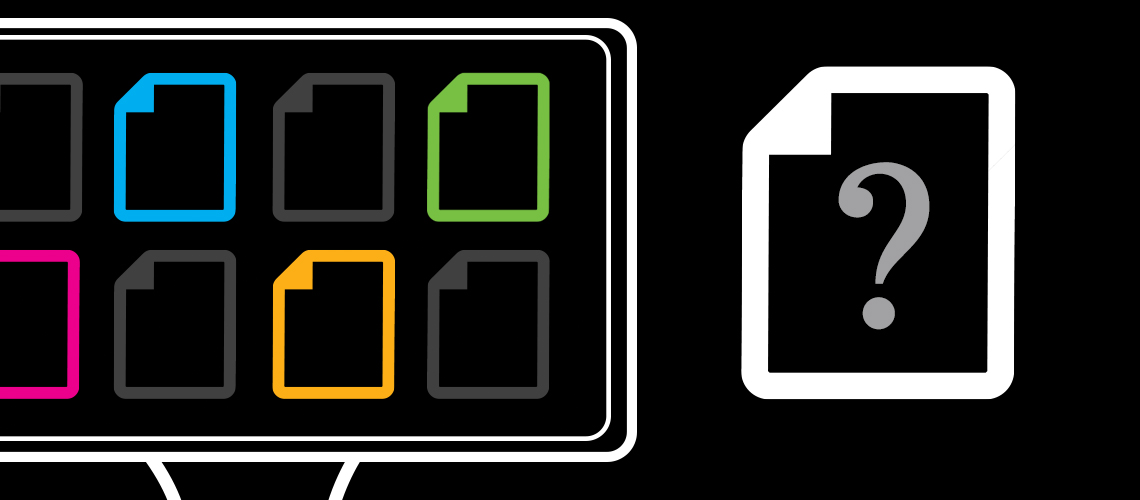
Whether you’re a client preparing to send content to your designer or a designer preparing to send a finished product to the printer, it is important to understand the difference between some of the more common file types used today.
Portable Document Format (.pdf) is a file format that saves the file in its native appearance. This means pdf documents are viewed and printed consistently from any device. They are typically vector files which allows for resizing without distortion. High resolution PDF files are the final document sent to be printed. Low or medium resolution PDF files can be uploaded to the web.
Encapsulated PostScript (.eps) is a file format for transferring vector artwork between applications. You can bring artwork from EPS files into other programs such as InDesign or Adobe Illustrator. EPS files are scalable up and down and used primarily for print, signage, or promotional items.
Adobe Illustrator Artwork (.ai) is a file format developed by Adobe for representing vector-based drawings. AI files are scalable up and down and used primarily for print, signage or promotional items.
Photoshop Document (.psd) is a layered image file developed by Adobe Photoshop. This file format is generally used in a working manner, meaning once the file is completed it is saved off as a .jpg, .png or .tif. Very rarely do photoshop documents get used in the final print, signage, or promotional files though they do have the ability to be placed in the Adobe Illustrator and Adobe InDesign programs. PSD files generally have a large file size.
JPG/JPEG (.jpg) is an image file format. The degree of compression can be adjusted, allowing a selectable tradeoff between storage size and image quality. JPG files can be used for web or print and can be imported into applications such as Word, InDesign, or PowerPoint. These files can only be scaled down in size. Scaling up will result in a loss of resolution.
Portable Network Graphics (.png) is a raster graphics file format that supports lossless data compression. PNG format has a transparent background and small file size. RGB and black and white PNG files can be used for web and other digital formats or imported into applications such as Word or PowerPoint.
Tagged Image File Format (.tif) is a flexible, adaptable file format used for storing raster graphics. They can include vector-based clipping paths and store image data in a lossless format. TIF images can be opened by most photo viewer and editor software programs. They can have a transparent background and generally have a large file size. These files are primarily used in print, signage and promotional items.
Graphic Interchange Format (.gif) (prounounced jiff) is a lossless bitmapped graphics file. While GIFs don’t store audio data, they do support animation and transparent backgrounds. They’re an extremely common and easily supported file type. Every image editor and viewer has the ability to open these files. They are used digitally – in PowerPoint programs and most commonly on the web.
DWG (.dwg) is a binary file format native to AutoCad used for storing two- and three-dimensional design data. These files can often be opened using Adobe Illustrator if AutoCad is unavailable. DWG files are scalable up and down and used primarily in print documents such as brochures and pamphlets.
If you find yourself struggling to understand when to use which file type, reach out.
We’re always happy to help!
Leave a Reply